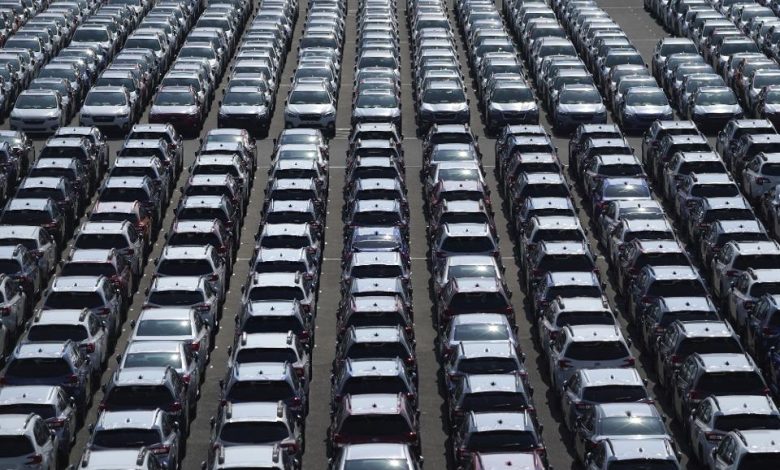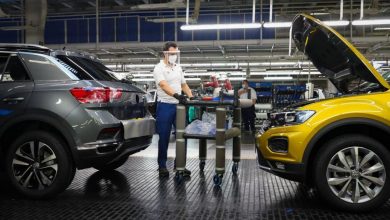
The Automotive Industry Gears Up To Navigate The New Normal
Beyond the immediate question of ‘how long’ is the more existential question of ‘what next’? As I see it, the main questions for the mobility industry to address as it begins its comeback from the COVID-19 crisis are, firstly, will there be opportunities for future growth and, if so, where will they be? Secondly, what will be the ‘new normal’ and how will this play into new strategic roadmaps? Thirdly, how can stakeholders navigate through a recessionary period that could last from anywhere between two to four quarters depending on the duration and severity of the pandemic?
Setting the Scene: From How Long To What Next?
Frost & Sullivan’s ongoing analysis of real-time data reveals that two scenarios could ensue: Severe Pandemic and Global Emergency with outcomes ranging from gradual recovery to recession, respectively.

Annual light vehicle production to decline
In the Global Emergency scenario, the pandemic rages uncontrolled, resulting in continued production slowdowns, high unemployment and plummeting demand. Efforts at getting “back-to-normal” give way to adapting to the “new normal”, with digital strategies being forcibly shoehorned into traditional supply chains. The mobility industry will hurtle into a recessionary environment, overtaking 2019 levels only by 2024-2025.
However, the more likely scenario which I see unfolding is that of a Severe Pandemic where persistent bottlenecks will prevent manufacturing plants from realizing full capacity utilization in the near-term. Most countries will resume only partial vehicle production by mid-June before ramping up to full capacity by August. As a result, I anticipate annual light vehicle production volumes dropping by about 21% from 2019 levels before subsequently picking up pace in 2021 and finally overhauling 2019 levels by 2023.
Will There Be Opportunities For Future Growth And, If So, Where Will They Be?
The pandemic has applied the brakes on some markets while sending others into overdrive. Digital & connectivity services are on track for runaway growth. The shared mobility market will teeter as stakeholders hastily redraw their blueprints to accommodate the new normal of social distancing. Meanwhile, travel restrictions will dampen prospects for the aftermarket as vehicles remain parked in garages, saving vehicles from daily wear and tear and delaying the need for replacement tires and parts.
But it’s not as if opportunities are lacking. In fact, five key markets of the mobility industry show that there’s light at the end of the tunnel.
For a start, my team has crunched automotive sales data from the last 50 years and has found that decline in car sales typically last only two years with the industry rallying to pre-recession levels within three to four years.

Bike sharing picks up
There are a few pockets of growth in the global shared mobility market that has, expectedly, been devastated by COVID-19. Bike sharing will be one of these areas of opportunity with several bike sharing companies seeing a rise in user activity. Like Uber has done with its UberMedic service, shared mobility operators are looking to repurpose their fleets to transport health and other frontline workers during the lockdown. I am also confident that public transport and shared mobility operators will bounce back over time, rejuvenating Mobility as a Service.
Connectivity services will increase in tandem with a resumption of vehicle sales. I am already seeing signs of burgeoning demand for advanced health, wellness and wellbeing (HWW) services and for feature-on-demand services that rather than being available as fixed monthly/ annual subscriptions will now become needs-based. At the other end of the spectrum, I foresee boom times for digital retail with connected dealerships that seamlessly interact online with their customers, making it a complete online journey from buying a car to contactless delivery of new vehicles.
The aftermarket and vehicle services market will stutter but an ageing vehicle parc will support growth, although growth rates will be much slower than earlier anticipated. The market will steady with the rising demand for in-vehicle aftermarket HWW components like air cabin filters and driver monitoring systems, while services around vehicle sanitization will also provide a much needed revenue boost. In a clear departure from tradition, contactless parts delivery and touchless pick up and drop at service locations will become the new norm.

Used car leasing to see growth
GETTY
The spotlight in the leasing market will be on used cars and light commercial vehicles. Used car sales and used car leasing will fill gaps between customer demands and low new vehicle production. Light commercial vehicle leasing will make gains as e-commerce deliveries surge due to COVID-19 lockdowns. New vehicle leasing will be subdued and kept afloat by the corporate segment. The leasing industry is now in a position to reinvent itself and offer what customers really want – flexible short-term leases, vehicle subscription services and simplified contract extensions at cost-effective terms.

Global electric vehicle outlook Is positive
FROST & SULLIVAN
Will COVID-19 derail the electric vehicle market? I don’t think so, principally based on supply side dynamics: firstly, China, the electric vehicle behemoth, seems on track for an early manufacturing revival and, secondly, companies like Tesla TSLA are continuing to push forward on their online sales and contactless delivery agenda. Add to this the expected extension / reintroduction of subsidies and incentives for new energy vehicles, and I believe the electric vehicle market will bounce back towards Q3 2020. I also think this is an opportune time for Asian electric vehicle manufacturers to boost sales in the European market which has been thrown into disarray by supply chain disruptions.
How Will The ‘New Normal’ Play Into New Strategic Roadmaps?

The new normal
The new normal following the coronavirus crisis will be characterized by low oil prices, the rise of e-commerce, more contactless transactions and greater government intervention. There’s no template yet on how to succeed in this new world order. However, a combination of short-term action, medium-term course correction and long-term strategic realignment should help automotive industry stakeholders regain their mojo.
Among short-term actions could include establishing workforce safety protocols, setting up quick response teams and providing financial flexibility and support to the entire ecosystem of dealers, suppliers and customers. Also, rather than allowing assembly lines to lie fallow, automakers could – as is already being done – temporarily shift focus to manufacturing medical equipment like ventilators and patient monitoring kits.
Digital retail of cars, parts and services will emerge a clear winner in the coming days. Over the medium-term, therefore, automakers could assess options that will enable the customers to traverse the process from vehicle purchase to delivery, completely online. This should be backed up by promotional campaigns for new cars, aftermarket and value-added services. Let us not forget that after 2009, car companies like Hyundai who came up with aggressive sales campaigns and promotions, gained market share that they have managed to hold onto ever since. Simultaneously, automotive manufacturers need to turn their attention to the possibilities presented by the used car business and low cost models.
Over the long-term, automakers will have to undertake a complete strategic overhaul beginning with more robust and diversified supply chains that are resistant to future disruptions. Priority investments should be made in high-growth digital platforms, in-car connectivity services and in-vehicle HWW offerings. And, finally, stepping up factory automation and Industry 4.0 should be a cornerstone of any future strategic plans.
The coronavirus pandemic has extracted a heavy toll but I am optimistic that in the days ahead, the automotive industry will zip out of this crisis, healthier, stronger and more resilient.
Font: Forbes





